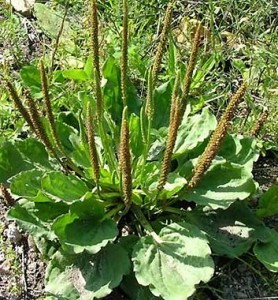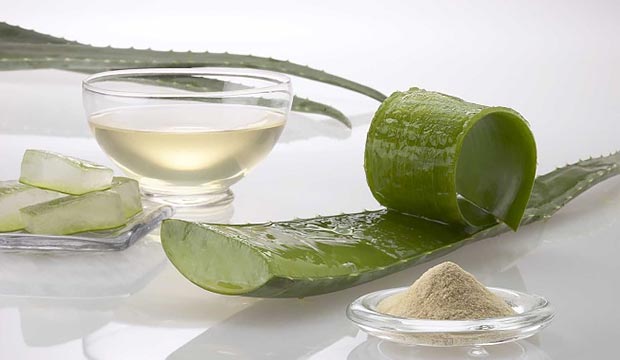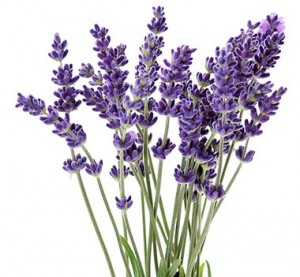When SHTF, it is absolutely vital to have proper medication, considering that access to regular medicine is not always available.
Even when you do have medicine, there is no way of telling when outside help will arrive. It is possible for supplies to run out.
That is why many people turn to natural remedies. These are easy enough to make using common ingredients that you should have around the household.
- Stings and bites

For the most common bites and stings, plantain is the most accessible resource. It is a very common weed found in many gardens, whether it was planted there or not. Simply take a few plantain leaves and make a poultice by chewing them up and applying them to the affected area.
An alternative to this would be an oil made from lavender, another common plant. All you have to do is take a few lavender flowers and chop them up finely. Afterwards you can cover them in a quarter inch of vegetable oil and heat the mixture slowly until it is warm to the touch. Now it is good to apply to the affected area. The best part is that the remaining mixture can be strained and stored for later use. It should still be good for around six months.
- Burns
Burns can be extremely painful and also render us incapable of performing common tasks. However, they can be treated with natural remedies.
One good example is the aforementioned lavender oil which is also good for burns and scalds. All you need to do is apply it gently to the damaged area and it will help reduce inflammation and speed up the skin healing.
Another useful tincture can be made from the aloe plant. This is another plant with vast healing properties so it should be part of your collection. Just remember not to plant it in the garden as it needs to stay indoors.
For a minor burn, all you need to do is take a leaf and squeeze out the juice onto the burn. If you have something more serious, use one of the bigger, outer leaves of the plant. Take it and slice it lengthwise and squeeze out all of the gel inside of it. Now you can use the gel on its own or, for added power, mix it with a little vitamin E oil in order to get a more potent tincture.
- Cuts
Just like burns, cuts are not only painful, but pretty common for people working around the house. It is very useful to have easy access to ingredients that can deal with them. However, before anything else, it is important to know that severe, deep cuts cannot be treated with herbs and oils.
There is a very large risk of tetanus in these cases and medical attention is recommended as soon as possible. For smaller cuts, though, lavender oil proves to be useful yet again. It works as a good antiseptic and decreases the chances for infection.
For increased healing power, garlic is very useful against cuts. It contains allicin, a substance which can be as potent as penicillin. What you need to do is to take one clove of garlic and to crush it hard and apply the juice to the damaged area. There is a drawback, though. When the garlic juice is applied to the cut, it will sting. It can even damage the skin if left on too long. In order to prevent this, wash the cut with cold water after a few minutes.
A combination of lavender oil and garlic juice will yield the best results – first the lavender, then the garlic.
- Itchiness
Itchiness can occur for various reasons and it is quite unpleasant. Many of us cannot fight the uncontrollable urge to scratch. While this might provide temporary relief, it does more harm than good. Not only will it damage the skin, but also leave you prone to infection.
The standard remedy for itches is a bath with baking soda and oatmeal. All you need to do is prepare a warm bath and add a cup of baking or a cup of finely ground oatmeal.
However, these remedies are good when you itch all over the place or in hard-to-reach areas. For more localized problems, there are easier solutions.
Take juniper berries, for example. They have many medicinal properties and would make a fine addition to your garden. The recipe, though, is a bit more complicated and will also require cloves, beeswax and butter. First, take about 3 ounces of butter and begin melting them in a pan. In another pan, melt about 2 tablespoons of beeswax. Combine them when they are both melted. Now take the berries and the cloves and ground them up well. Take about 5 tablespoons of ground berries and 3 spoons of ground cloves and add them to the mixture. First allow the concoction to cool down then apply it to all itchy areas.
- Sunburn
For someone who works outside in the sun all day, sunburn is a common problem. However, it is also one which can be dealt with quite easily.
One simple technique of relieving the pain of sunburn involves just using potatoes. Take one or two potatoes, wash them thoroughly and cut them into small pieces. Next they need to be ground up into a paste which is easiest in a blender. If the result is too dry, it is ok to add some water to the mixture.
This paste should be applied directly to the burned area and left there until it dries up. Afterwards a cold shower is recommended.
If this technique is too messy or if the sunburn is localized to a smaller area, it is ok to take the potato paste and simply apply it to gauze. The gauze should then be placed on top of the burn, making sure to change the dressing every hour.
As you can see, many common problems can be treated with simple techniques that involve ingredients which anyone can grow around the home.
This article has been written by Bella Scotton for Survivopedia.






































































This is a great article that you have prepared for us out here who are serious about what is going on around us now and in the future. This is great information.
THANK YOU!
For those of you who don’t think anything will ever happen, think again. We buy ammo every payday and keep plenty of stock on hand. When we bought this house I wanted to take out the mildly decorated metal front door and my husband said “NO.” We will never know if we will need the protection. As time has gone by, with all that is going on with our government, etc., I now fully agree with him. We also have a full survival kit out in the RV garage where we park our truck to throw in the back of the truck, that also include dehydrated packaged food and cases of water that we rotate to keep fresh. We also have back packs loaded (in the house) in case we ever have to leave on foot. We have an unstable economy, government and we also live in an area known for Tsunamis and a substantial earthquake fault 50 miles out to sea and we live RIGHT on the coast and look out at to the ocean. So we are really grateful for what you have to say and share with us. Again, thank you!
you can take tea bags and dab them on the sunburn areas too. The tannic acid in the tea alleviates the burn
Aloe leaves sliced lengthwise and cut to “fit” a scraped/wounded area, may be taped over the injury, changing the dressing twice a day.
Unheated/raw honey applied to wounds is very healing. An enzyme in the RAW honey reacts with body fluids in a wound to produce slow steady stream of hydrogen peroxide. Apply raw honey to “dirty” wound with gravel, dirt, etc. After honey fills the wound, flush out honey and debris with much less pain than with just using water or a brush, etc. Reapply more honey after wound cleaning is completed and cover with sterile dressing.
I have used cold mustard, the regular stuff, on most burns. Please do not use on burns that are open. Something in the mustard keeps the heat out and aids in the healing process. the paste should be removed after 2 to 3 hours by washing off in cool water then reapplying and allowing to dry then wash and repeat for 3 or 4 times. Don’t know why but it does work. The added plus of not only cooling off the heat is that it will eliminate or minimamize scaring.
I don’t know where you got your info about aloe, but it does not need to be grown indoors. I didn’t plant it, but it is growing wild around my house outdoors.
I take exception about Cuts and getting tetanus. Tetanus is ONLY contracted IF the Cut was From something that was in contact with Manure from Animals (farm feeding pens or corals). So, just because you received a cut, from metal or something else, if It was Not on the ground or a part of a pen, you will not get tetanus. Big Pharma wants you to get a shot and if you were Not exposed to tetanus, you are screwing your self in that your body will become to the shot and it will not help you in the Right Situation.
Actually, Tetanus lives in the soil. It is an Anaerobic bacteria, which means it multiplies best in an area with little to no Oxygen, thus its connection with puncture wounds.. Not very likely to get it from a cut or scrape, as long as the wound was cleaned completely, and was NOT a puncture or stab wound such that you couldn’t get to all parts of the wound to clean it.
For sunburn – the remedy we have used for years is vinegar. Plain ol’ vinegar on a paper towel, wiped liberally on the red area (my bald head and neck)…takes the flame feeling away and starts turning it into a tan by the next day. Use every half hour as need requires for a soothing coolness. It also normally eliminates any peeling. Just expect the attendant salad jokes.
Vinegar works great for sunburn.
For other burns, try covering the burn with flour,or just putting the
burned area into the flour for about 10-15 minutes.
It soothes it, and you’l hardly know you got burnt, best fix.
What is the best plants to use for high blood pressure, diebetes and fibromilgea”if I spelled it right?”
Tony, I suggest you to read our Paleo Foods for Survival and also How to Survive Without the Pharmacy. And stay close, we are going to publish more articles about surviving with chronical diseases. Thank you for your question.
In 25 years working as an herbalist, I have never heard of Aloe Vera being used in tincture form. A tincture is made by soaking the plant material in alcohol for 30 days. Aloe only needs to be scraped of its green covering and applied to a wound or consumed internally. (The green skin is highly laxative.) The beneficial mucilage would not survive tincturing. And in case anyone wonders, store bought Aloe Vera gel is far inferior to the leaf. I keep a large plant alive in New York (zone 7) by taking it indoors and putting it under lights in the winter.